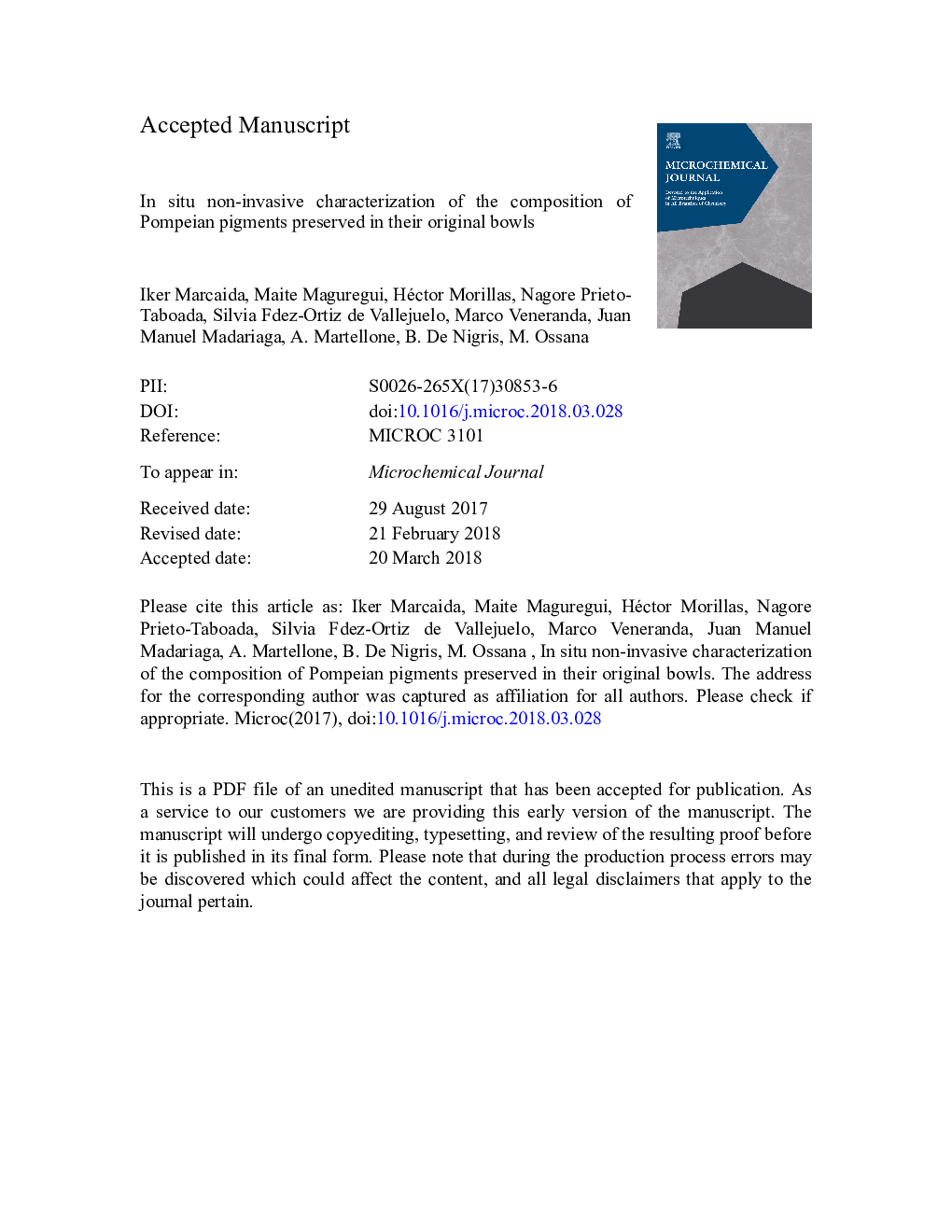| Article ID | Journal | Published Year | Pages | File Type |
|---|---|---|---|---|
| 7640932 | Microchemical Journal | 2018 | 36 Pages |
Abstract
Pigments are one of the most important archaeological records recovered from the burial of Pompeii. Therefore, their analysis and characterization is an important task from the historical, archaeological and chemical point of view. In this work, a unique collection of various coloured raw pigments conserved in their original bowls recovered from the archaeological excavations of Pompeii was characterized. Nowadays, these pigments are stored both in the Naples National Archaeological Museum (MANN) and in the Applied Research Laboratory from the archaeological site of Pompeii (ARLP) due to its high archaeological value. For the molecular analysis, in situ micro-Raman spectroscopy was used and the elemental characterization was conducted by means of hand-held energy dispersive X-ray fluorescence (HH-ED-XRF). Mercury sulphide (HgS) and red ochre (hematite, Fe2O3) were identified in different red pigments and yellow ochre (goethite, FeOOH) in the analyzed yellow colours. The analyzed blue pigments were Pompeian blue (CaCuSi4O10) in all cases, green pigments were composed mainly by malachite (Cu2CO3(OH)2) and the white one resulted to be dolomite CaMg(CO3)2. Pink powders appeared to be lake pigments, using madder lake (alizarin and purpurin) as organic colorant in order to dye the inorganic mordant (local clays). In the case of blue and pink pigments Principal Component Analysis (PCA) was performed in order to see similarities/differences in the elemental composition among samples of the same colour. Groups within samples of the same colour were identified pointing out different sources of the raw material or enrichments in leachable metals present in soils during the burial.
Related Topics
Physical Sciences and Engineering
Chemistry
Analytical Chemistry
Authors
Iker Marcaida, Maite Maguregui, Héctor Morillas, Nagore Prieto-Taboada, Silvia Fdez-Ortiz de Vallejuelo, Marco Veneranda, Juan Manuel Madariaga, Alberta Martellone, Bruno De Nigris, Massimo Osanna,
